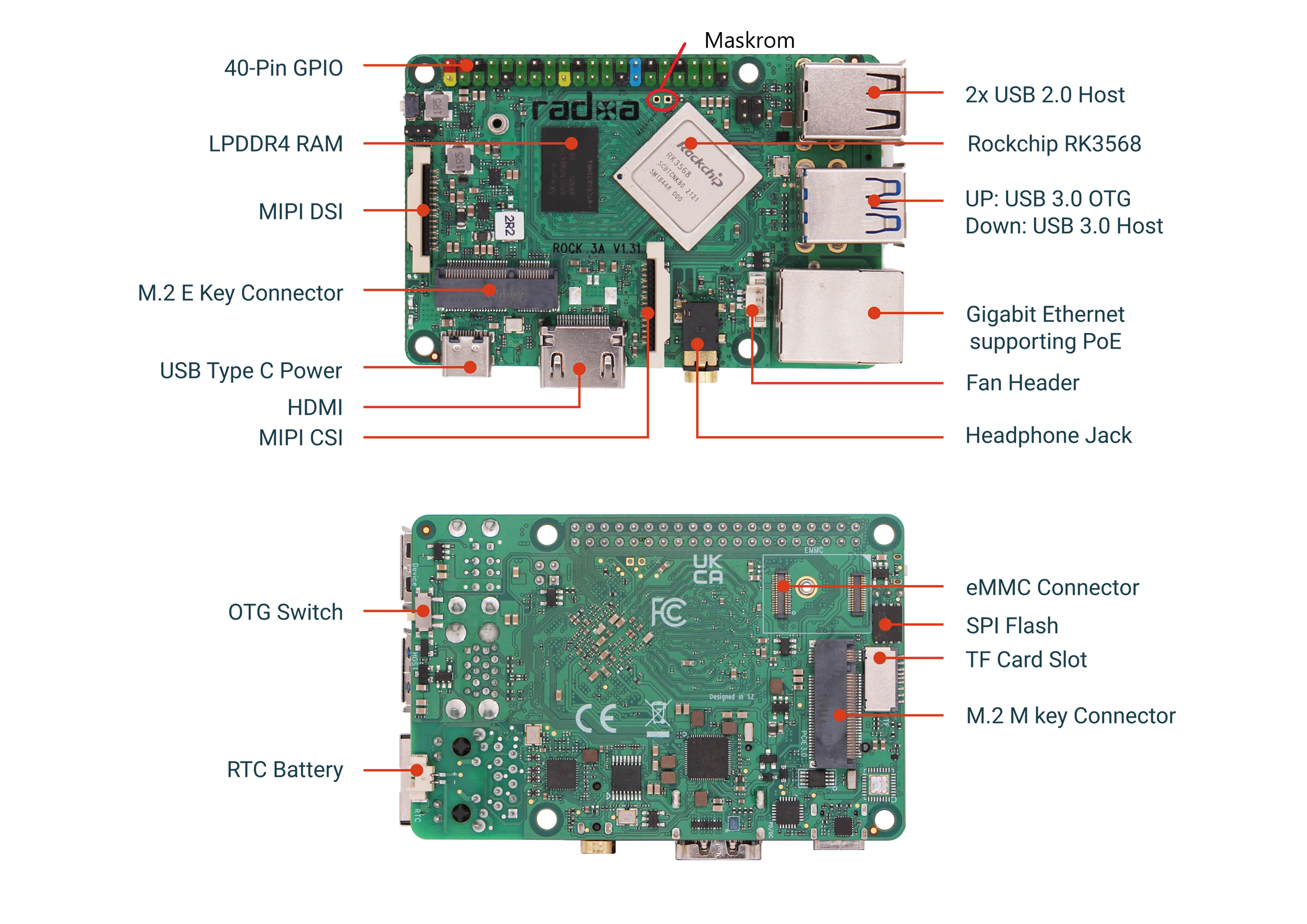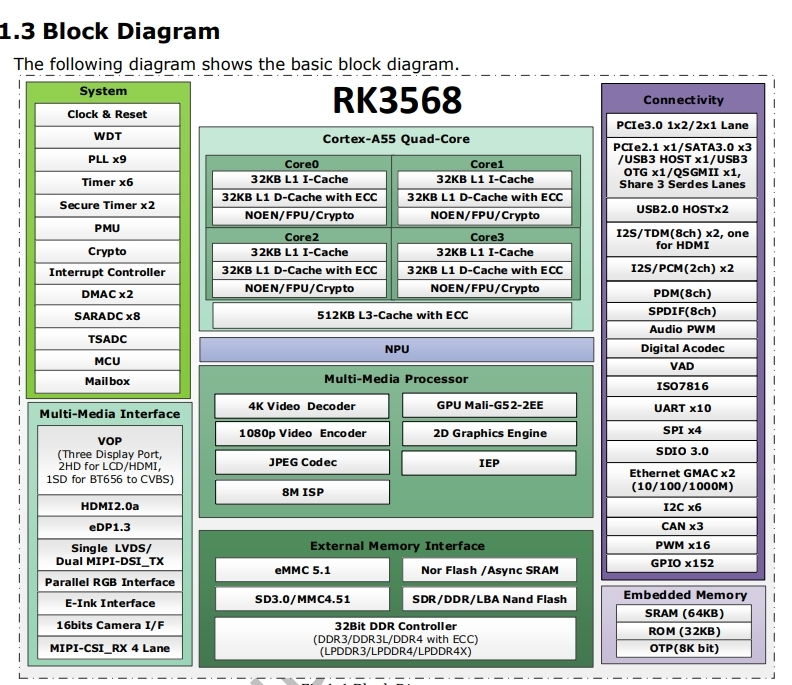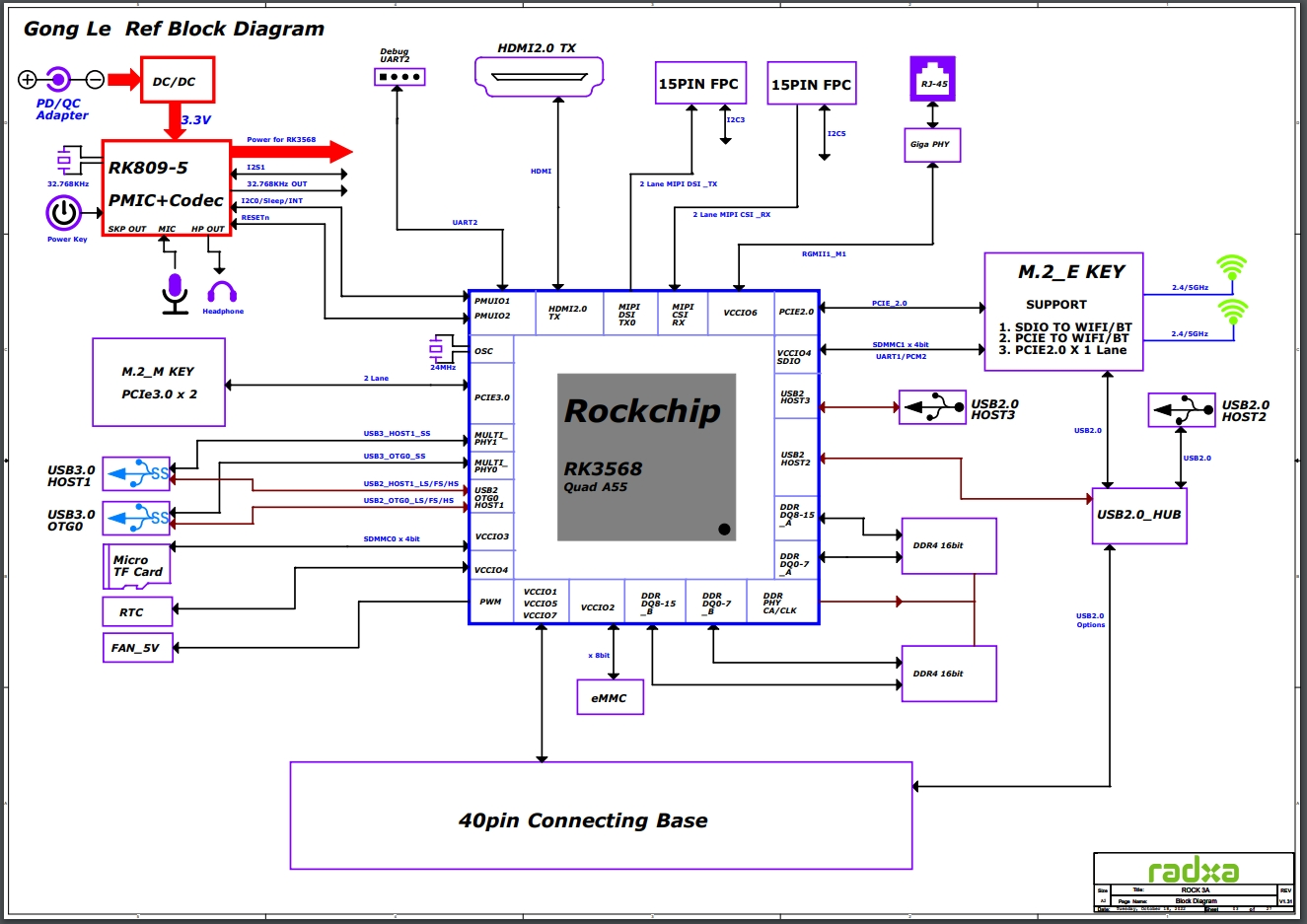ROCK 3A
Product Description
- The ROCK 3A features a quad-core Cortex-A55 ARM processor and LPDDR4 RAM, and supports up to 4K@60 HDMI, MIPI DSI, MIPI CSI, 3.5mm headphone jack with microphone, USB port, Gigabit Ethernet, PCIe 3.0, PCIe 2.0, 40-pin GPIO docking station, RTC. The ROCK 3A also supports a 3.5mm headphone jack. In addition, the ROCK 3A supports PD and QC protocol power supply.
Physical Photos

Chip Block Diagram

Features
| Model | Radxa ROCK 3A | |
| SoC | Rockchip rk3568 | |
| CPU | Quad-core Cortex-A55, up to 2GHz | |
| GPU | Arm Mali™‑G52‑2EE, Supports Arm Mali™‑G52‑2EE, OpenGL® ES1.1/2.0/3.2, Vulkan® 1.1, OpenCL™ 2.0 | |
| RAM | 1/2/4/8 GB LPDDR4 | |
| Storage | eMMC on Board:0/8/16/32/64 GB microSD Card | |
| Display | Provides Micro HDMI interface: supports 4K@60fps output 1x2 lane MIPI DSI | |
| Ethernet | Gigabit Ethernet, Supports POE PoE requires additional optional HAT | |
| Wireless | Supporting Radxa Wireless Module A8(Wi-Fi 6 & BT 5.2) | |
| USB | 2x USB 2.0 HOST ports 1x USB 3.0 HOST port 1x USB 3.0 OTG/HOST port | |
| Camera | 1x2 lane MIPI CSI | |
| Others | 40 Pin extends Header | |
| Power | Requires 5V/2A adapter | |
| Size | 65mm x 30mm | |
System block diagram

Documentation guidelines
Except for the other systems directory below, the other contents are based on Radxa OS (Radxa's customized system based on Debian).
Getting started
By introducing system programming, system login, accessory usage, etc., let user can get started quickly.
Radxa OS
Radxa OS is an operating system customized by Radxa based on Debian OS. This chapter introduces system login, network connection, etc to let user to be familiar with the system quickly.
System Configuration
Introduces how to use tools like rsetup or command line to use devices or function.
Application Deployment
Introduces how to deploy the applications such as Samba, Docker, PVE, OMV, LAMP, Cheese, remote control panel, etc.
Application Development
Introduces upper-layer application development, such as QT, WiringX, Mraa, etc.
Hardware Development
Introduces hardware information, such as hardware interfaces, supported accessories, etc.
Lower level Development
Introduces uboot, kernel, debian os compilation and packaging, etc.
Other Systems
Introduces other systems than Radxa OS, such as Android
Accessories
Introduces supported accessory models and instructions for use.